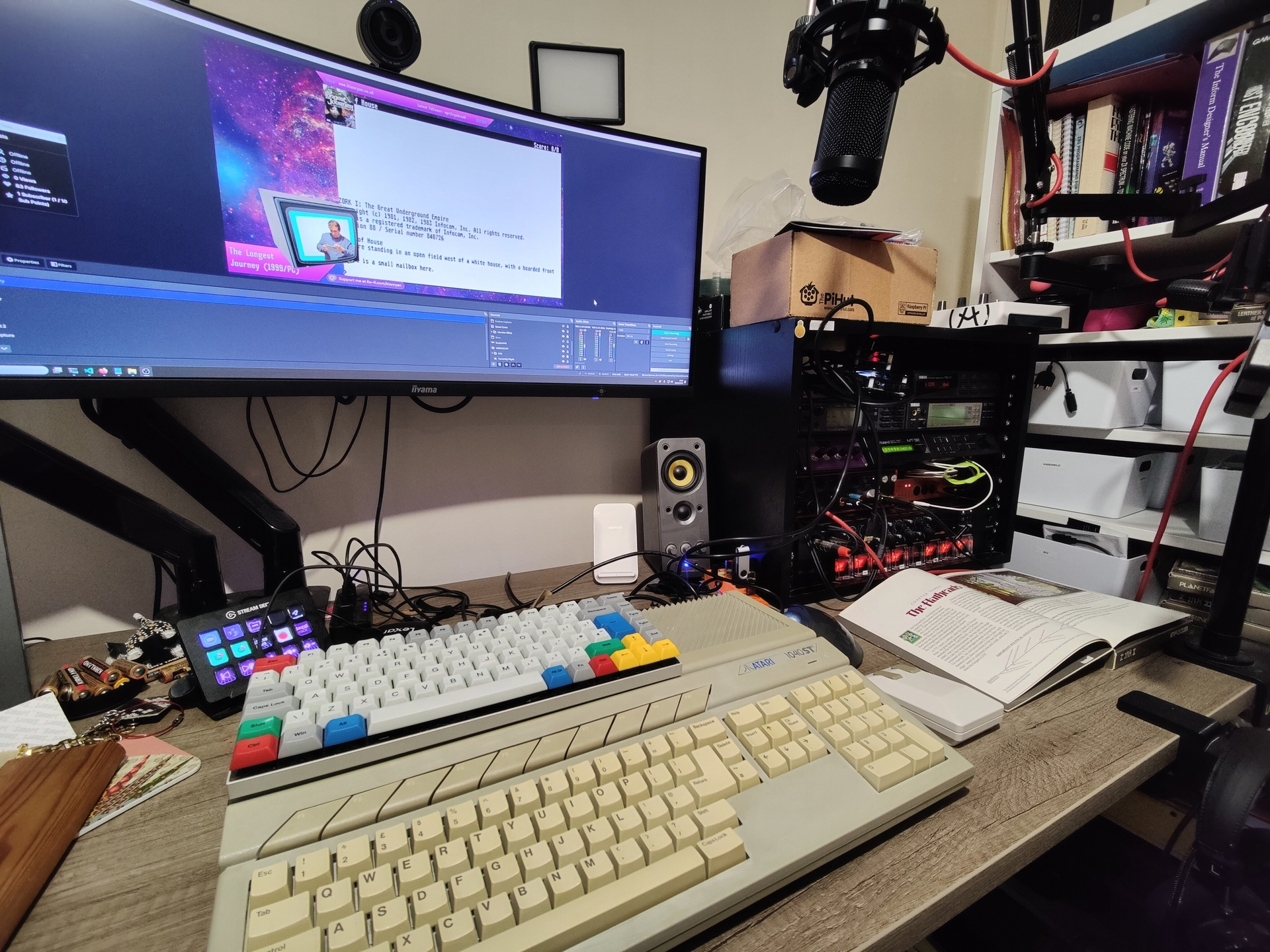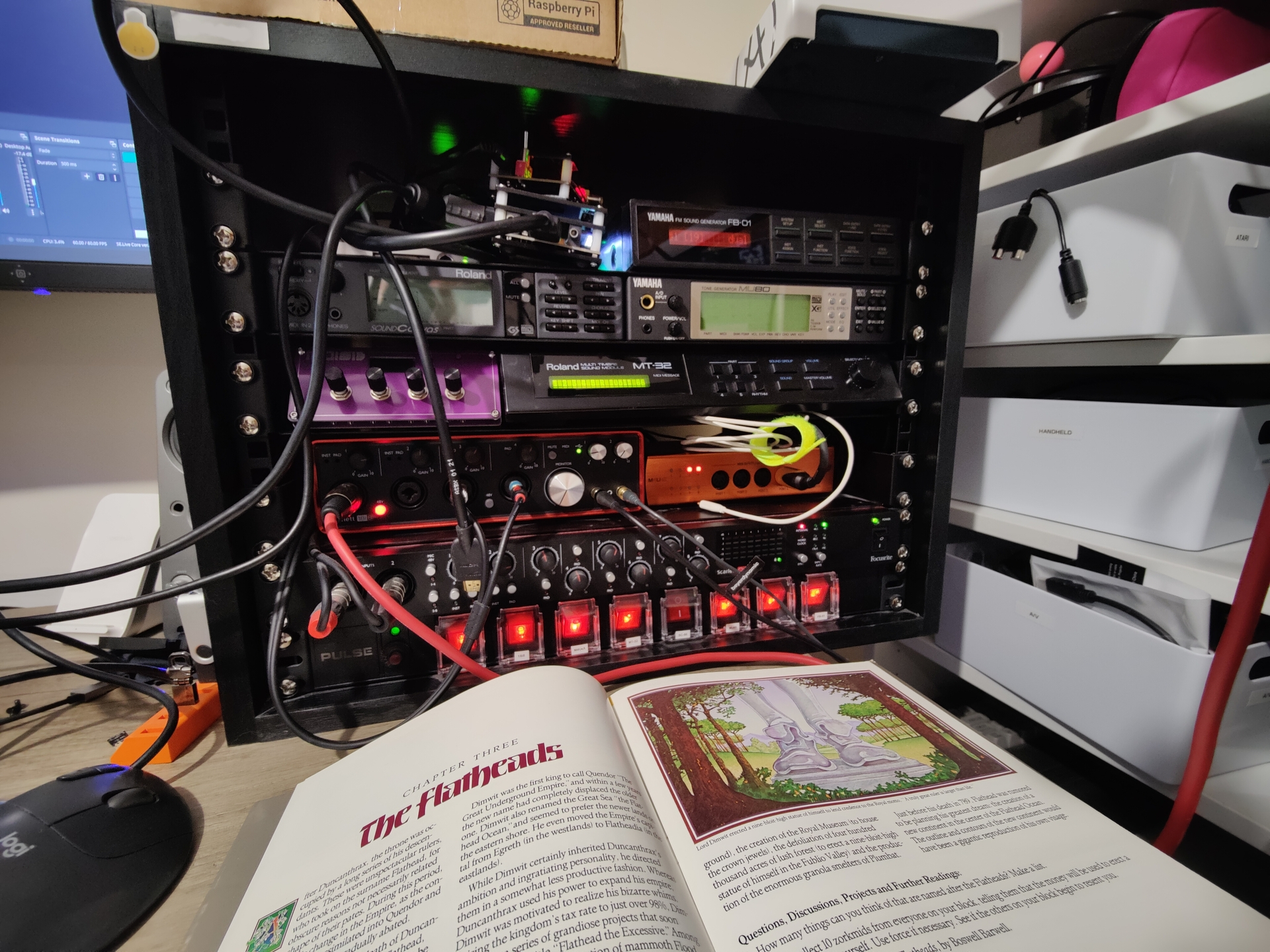I host an almost regular text and graphic adventure stream over on Twitch, where we stream from a range of home computers - 8 bit machines such as the ZX Spectrum and the C64 through to 16 bit machines such as the Atari ST (my preferred platform for Infocom games), through to multiple generations of Macintosh hardware (which we used recently for a multi-generational Myst stream).

Streaming from this range of hardware requires flexibility on the capturing video and audio, which I treat as separate sources and then mix in OBS. If I want to play a DOS game with General MIDI support and play it with General MIDI devices one day and then switch to capturing output from a 48K S-Video modded Spectrum the next I can do so pretty quickly. I’m mostly limited by desk space, and avoiding being crushed by an ever growing tower of aging hardware.
I’ve now been given an Amiga to rebuild. Good times.
Video is captured using a pair of Startech USB3HDCAP capture cards. Natively these can capture a range of inputs - composite, s-video, SCART/RGB, VGA, DVI and HDMI. Used with the last official driver set they’re surprisingly tolerant of a range of input sources (The unofficial “Thankless” drivers which were the preferred drivers for this device no longer appear to work). I can feed these devices /almost/ anything, and they’ll take it. I use two so I can play games side by side from two systems. As a warning, the two cards don’t always get on well with each other and can play USB disappearing acts.
The USB3HDCAP captures, but doesn’t upscale well, so for non VGA/DVI sources I add an OSSC and for composite/s-video a Koryuu Transcoder. That allows me to take component, s-video and RGB sources (SCART/VGA), upscale by 2x-4x and perform some cleaning before passing a HDMI signal to the USB3HDCAP. This helps significantly when dealing with noisy input sources like the 48K Spectrum. Unfortunately, I only have one of these, so if we’re running side by side, I try to use a less noisy second device (most 16/32 bit devices).
Device audio is captured through a Focusrite 18i8 2nd Gen, which also handles XLR microphone duties. Two 3.5mm aux cables are attached to inputs to plug directly into into computer line-outs as needed.

Finally, there’s a small stack of MIDI hardware. A Roland MT-32, Roland SC-55, Yamaha MU-80, Yamaha FB-01 and MidiSID (Sheila Dixon’s General Midi/MT-32 compatible SID chip MIDI instrument) sit on the audio rack plugged into a Focusrite OctoPre. They stay connected to a ESI M4U eX 4 port MIDI interface to act as a multi way MIDI in-out from the Atari ST or as a multi-out from the PC using Bome’s Midi Translator Pro. This is a great set up for playing old (DOS adventure games via ScummVM, and capturing or mixing the General MIDI output of multiple devices simultaneously to see how they compare.
All this gets pulled together in OBS for live broadcast on a moderately powered PC. Each audio device is configured with ASIO, and each video capture device is usually passed through a de-noise algorithm (usually the NVidia one). For quiet streams, such as text adventure games, I’ll use the MIDI hardware to play a range of MIDI files for background audio. This is especially useful when stuck at the dead end of a puzzle, the cogs are visibly whirring, and you temporarily forget you’re on camera.
I’ve been doing this in various forms for a few years now, and slowly refining both the broadcasts and the hardware. The MIDI tower especially started off as one or two pieces of kit, and has transformed in to the current beast. I hope my streaming has got better over the years, I appreciate it’s quite a niche area so I’m grateful for the few people that hang around each week, keep me company and help solve puzzles.
After Twitch changed their rules over long term video storage, I now export completed plays to YouTube. I try to to stream on Tuesday evenings.
 There are no ads on this blog and as far as I can remember, never have been.
There are no ads on this blog and as far as I can remember, never have been.